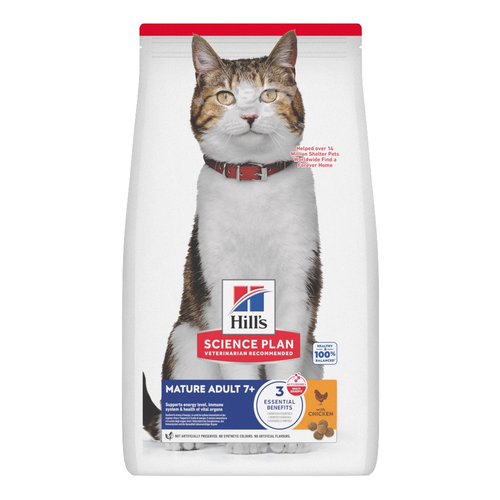
-
Find the right food for your petTake this quiz to see which food may be the best for your furry friend.Find the right food for your petTake this quiz to see which food may be the best for your furry friend.Featured products
 Perfect Digestion Large Breed Puppy Food
Perfect Digestion Large Breed Puppy FoodPrecisely balanced nutrition with Hill's ActivBiome+ prebiotic blend actively contributes to supporting digestive health and overall wellbeing to help your pet feel their best
Shop Now Large Breed Adult Dog Food
Large Breed Adult Dog FoodHill's Science Plan Large Breed Adult Dog Food with Lamb & Rice is a complete pet food, specially formulated with ActivBiome+ Multi-Benefit Technology.
This food is specifically designed to fuel the energy needs of large breed dogs during the prime of their life.Shop Now Adult Light Dog Food
Adult Light Dog FoodHill's Science Plan Light Adult Wet Dog Food is a complete premium pet food for adult dogs that tend to gain weight easily. This deliciously smooth loaf is formulated to deliver the appropriate amount of energy to support weight maintenance in adult dogs.
Shop NowFeatured products CULINARY CREATIONS ADULT CAT FOOD
CULINARY CREATIONS ADULT CAT FOODHill's Science Plan CULINARY CREATIONS Adult cat food with Salmon & Carrots was formulated to provide a great-tasting experience to cats. Its delicious flavour and texture are combine with essential nutrients to support cats' optimal health during the prime time of their life. Specially formulated with high-quality salmon protein, essential taurine for heart health & balanced minerals to support kidneys & bladder.
Shop Now Adult Cat Food
Adult Cat FoodHill's Science Plan Adult Cat Food with Chicken is a complete pet food, specially formulated with ActivBiome+ Multi-Benefit Technology.
This food is specially formulated to fuel the energy needs of cats during the prime of their life.Shop Now Sterilised Adult Cat Food
Sterilised Adult Cat FoodHill's Science Plan Adult Sterilised Cat Dry Food with Salmon is specially formulated with ActivBiome+ Multi-Benefit Technology. It is a precisely balanced nutrition, tailored to meet the needs of sterilised cats, to help keep sthem lean & healthy.
Shop Now -
Dog
- Dog Tips & Articles
-
Health Category
- Weight
- Food & Environmental Sensitivities
- Urinary
- Digestive
- Joint
- Kidney
-
Life Stage
- Puppy Nutrition
- Adult Nutrition
- Senior Nutrition
Cat- Cat Tips & Articles
-
Health Category
- Weight
- Skin & Food Sensitivities
- Urinary
- Digestive
- Kidney
-
Life Stage
- Kitten Nutrition
- Adult Nutrition
Featured articles Microchipping: The Facts | Hill's Pet
Microchipping: The Facts | Hill's PetThe government has announced that as of April 2016, all dogs in the UK must be microchipped by law.
Read More Pet Nutrition: What Makes "Healthy" Pet Food Healthy? | Hill's Pet
Pet Nutrition: What Makes "Healthy" Pet Food Healthy? | Hill's PetIn people, the right diet is very important. If you are eating the wrong way for your metabolism, activity level, age and lifestyle you could end up with health issues.
Read More The Incredible Science Behind Your Pet's Microbiome
The Incredible Science Behind Your Pet's MicrobiomeLearn what your pet's microbiome is, how it contributes to your pet's gut and overall health, and why nutrition is important in maintaining healthy microbiomes.
Read More -


Toilet training your new kitten
Cats are naturally very clean and, chances are your kitten will already have learned how to use the litter tray from their mum. All you'll need to do is buy a plastic litter tray big enough for your kitten to move around in and fill it with enough litter to cover the bottom of the tray. If you can use the same one used at the breeder's house, your kitten will appreciate the familiar smell and texture.
Show your kitten where the litter tray is and put them in there after meals. Also do this if you see them sniffing around, crouching or generally behaving like they need to 'go'. They will often seek out hidden, dark, quiet places, so keep a close eye on them creeping off after meal times.



Tasty Tips
Litter tray dos and don'ts
View your cat’s litter tray as you would a public toilet. We would not like to go to the toilet in a noisy, busy place where every passer-by could see us, and cats are the same. Place the litter tray away from their bed and food, and make sure it’s somewhere as private and quiet as possible. Many people put them in the laundry room, but the noises of such places can be very frightening and off-putting for a kitten , or even an adult cat.
Empty the litter tray regularly, as your kitten will not want to use it if it's 'dirty.’ Ideally, you should have one more litter tray than you have cats. These should be in different locations so that there is always an unoccupied, clean tray available. You should clean the litter trays at least daily. Some disinfectants and bleach are toxic to cats, so it's best to only use hot water and detergent. If you're pregnant, try to get someone else to clean out the tray or make sure you wear rubber gloves and wash your hands thoroughly afterwards. This minimises the risk of toxoplasmosis which, thankfully, is very rare but can cause serious problems to unborn babies.
Once your kitten is old enough to venture outside, you may want to dispense with the litter tray altogether. You may find that once they have access to the outside world, they no longer want to use it at all. Don't dispose of it too hastily, though. The outside world will be daunting to your kitten at first, so be sure to give them the option of having a litter tray. It’s also useful to keep your litter tray in case of events like if you move house, when you’ll need to keep your cat inside for a few weeks to get used to the new house.
Accidents will happen
Even the cleverest kitten is bound to have the odd accident. Whatever you do, don't punish them. Praise them when they do use the litter tray and maybe offer a small reward, and you'll soon be back on track. If you catch them in the act in the wrong place, try to gently pick them up and put them in the tray before they finish. This way they will do the post-toilet scratching and digging activities in the tray and it will reinforce where they should be going.
If your cat or kitten is experiencing a sudden bout of accidents around the house and seemingly doesn’t want to use the litter tray, then this could be a sign of an underlying medical or behavioural issue - particularly if it involves an older cat. You should consult your vet if strange behaviours occur suddenly during the toilet training process or later in life.
Reviewed by Dr. Hein Meyer, DVM, PhD, Dipl-ECVIM-CA and Dr. Emma Milne BVSc FRCVS


One of our staff authors prepared this article for you
Related products

Hill's Science Plan Adult Cat Food with Chicken is a complete pet food, specially formulated with ActivBiome+ Multi-Benefit Technology.
This food is specially formulated to fuel the energy needs of cats during the prime of their life.

Hill's Science Plan CULINARY CREATIONS Adult cat food with Salmon & Carrots was formulated to provide a great-tasting experience to cats. Its delicious flavour and texture are combine with essential nutrients to support cats' optimal health during the prime time of their life. Specially formulated with high-quality salmon protein, essential taurine for heart health & balanced minerals to support kidneys & bladder.

Hill's Science Plan Adult Sterilised Cat Dry Food with Salmon is specially formulated with ActivBiome+ Multi-Benefit Technology. It is a precisely balanced nutrition, tailored to meet the needs of sterilised cats, to help keep sthem lean & healthy.

Hill's Science Plan Mature Adult Cat Food with Chicken is a complete pet food, specially formulated with ActivBiome+ Multi-Benefit Technology.
This food supports graceful aging in cats, providing a synergistic ingredient blend to help support energy & activity levels.
Related articles

Learn how your cat's poo can be a good indicator of her overall health, including how to spot unhealthy or abnormal cat poop and what it might mean.

Cats with sensitive skin have special needs and even healthy cats can sometimes develop poor skin health. Learn more about sensitive skin symptoms in your cat, what you can do to help your pet feel more comfortable and get recommendations on sensitive skin cat food.

Learn about the causes of cat dermatitis, how to spot the symptoms and the best treatment options. Visit Hill's Pet for detailed guidance and tips.

Understand common skin issues in cats and how to manage them effectively. Learn signs and prevention, and get care tips. Find out more at Hill's Pet.

Put your cat on a diet without them knowing
Our low calorie formula helps you control your cat's weight. It's packed with high-quality protein for building lean muscles, and made with purposeful ingredients for a flavourful, nutritious meal. Clinically proven antioxidants, Vitamin C+E, help promote a healthy immune system.
Put your cat on a diet without them knowing
Our low calorie formula helps you control your cat's weight. It's packed with high-quality protein for building lean muscles, and made with purposeful ingredients for a flavourful, nutritious meal. Clinically proven antioxidants, Vitamin C+E, help promote a healthy immune system.

